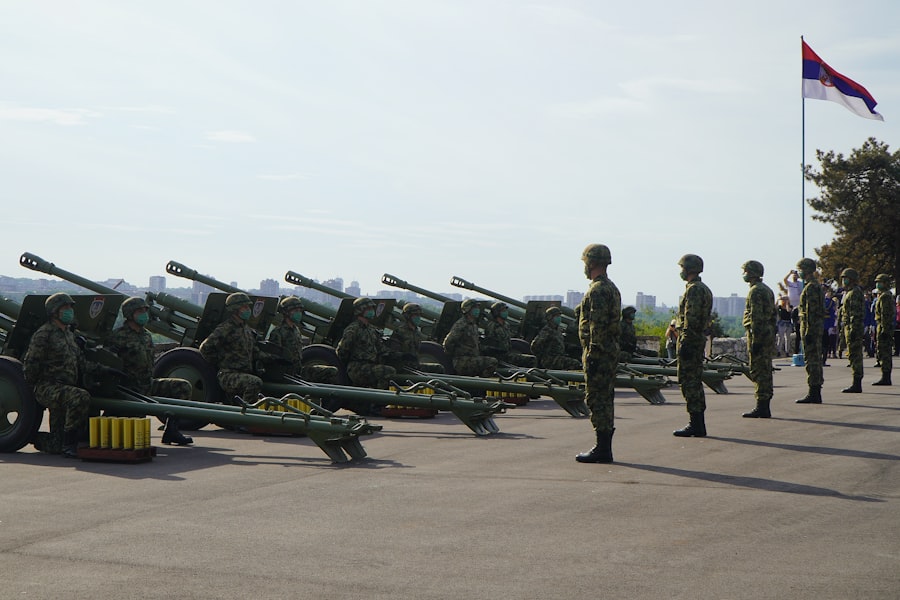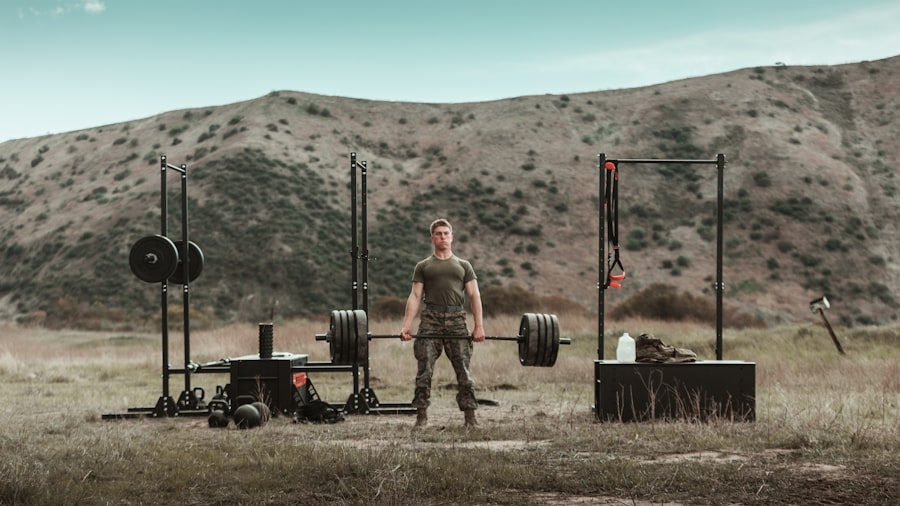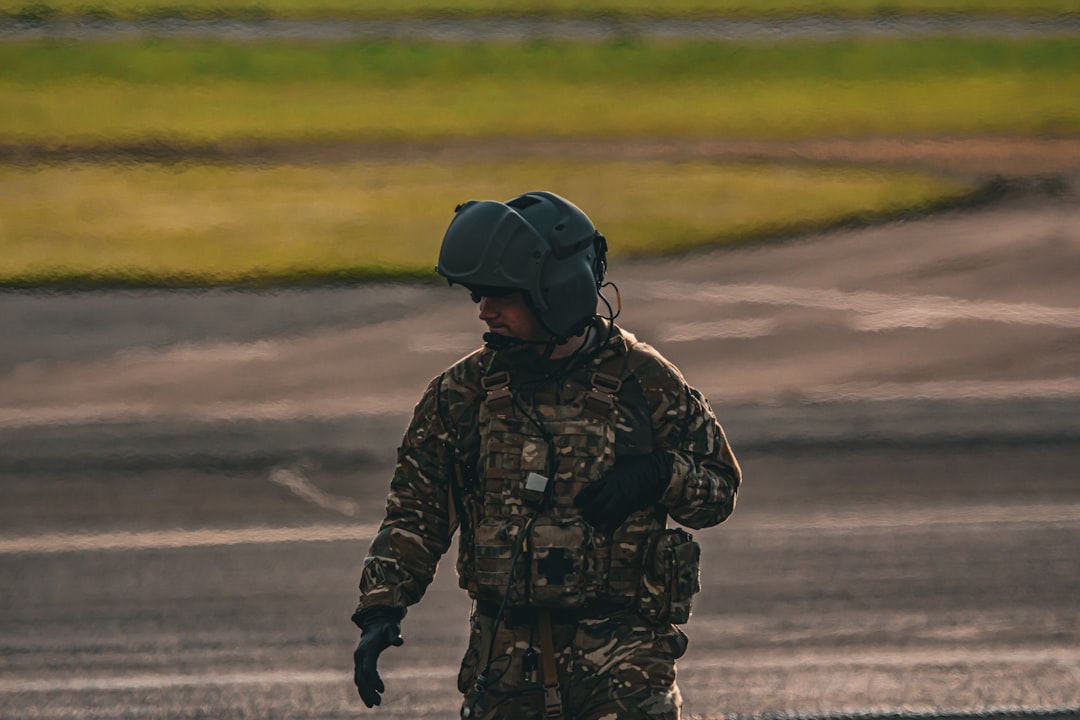Military testing ranges serve as critical facilities where armed forces can evaluate and refine their equipment, tactics, and strategies. These ranges are specifically designed to provide a controlled environment for testing various military technologies, from firearms and munitions to advanced aircraft and missile systems. The significance of these ranges cannot be overstated, as they play a vital role in ensuring that military personnel are well-prepared for real-world operations.
By simulating combat scenarios and providing a space for experimentation, military testing ranges contribute to the overall effectiveness and readiness of a nation’s armed forces. The importance of military testing ranges extends beyond mere equipment evaluation. They also serve as venues for training personnel, allowing soldiers, pilots, and other military members to gain hands-on experience with the tools and technologies they will use in the field.
This practical training is essential for developing the skills necessary to operate complex systems under pressure. As military technology continues to evolve, the role of testing ranges becomes increasingly crucial in maintaining a competitive edge on the battlefield.
Key Takeaways
- Military testing ranges are essential for testing and evaluating military equipment and technology.
- The history of military testing ranges dates back to the early 20th century, with significant developments during World War II and the Cold War.
- The purpose of military testing ranges is to ensure the effectiveness, safety, and reliability of military equipment and technology.
- There are various types of military testing ranges, including land, sea, air, and space ranges, each serving different purposes.
- Security measures at military testing ranges are stringent to protect classified information and ensure the safety of personnel and the surrounding environment.
History of Military Testing Ranges
The concept of military testing ranges has its roots in the early days of organized warfare. As armies began to adopt more advanced weaponry, the need for dedicated spaces to test these innovations became apparent. The first formal testing ranges emerged in the late 19th and early 20th centuries, coinciding with the rapid development of firearms and artillery.
These early ranges were often rudimentary, consisting of open fields where soldiers could practice shooting at stationary targets. As warfare evolved through the 20th century, so too did the complexity of military testing ranges. The advent of aerial combat during World War I necessitated the creation of air-to-air and air-to-ground testing facilities.
By World War II, nations recognized the importance of comprehensive testing programs, leading to the establishment of more sophisticated ranges equipped with advanced technology. The Cold War further accelerated this trend, as both NATO and Warsaw Pact countries invested heavily in testing facilities to develop and refine their arsenals. Today, military testing ranges are highly specialized environments that reflect decades of technological advancement and strategic planning.
Purpose of Military Testing Ranges

The primary purpose of military testing ranges is to provide a safe and controlled environment for evaluating military equipment and tactics. This evaluation process is essential for ensuring that weapons systems function as intended and meet the rigorous standards required for operational deployment. By conducting tests in a controlled setting, military personnel can identify potential flaws or weaknesses in equipment before it is used in combat situations.
This proactive approach helps to mitigate risks and enhance overall mission success. In addition to equipment evaluation, military testing ranges also serve as vital training grounds for personnel. Soldiers and operators can practice using new technologies in realistic scenarios, allowing them to develop the skills necessary for effective operation in high-pressure situations.
Furthermore, these ranges facilitate joint exercises between different branches of the military, fostering collaboration and improving interoperability among forces. Ultimately, the multifaceted purpose of military testing ranges underscores their importance in maintaining a nation’s defense capabilities.
Types of Military Testing Ranges
| Types of Military Testing Ranges | Description |
|---|---|
| Artillery Testing Range | Used for testing and evaluating artillery weapons and ammunition. |
| Naval Testing Range | Used for testing naval weapons, systems, and equipment in a maritime environment. |
| Air Force Testing Range | Used for testing and evaluating aircraft, missiles, and other air force equipment. |
| Ballistic Missile Testing Range | Used for testing and evaluating ballistic missiles and related technologies. |
Military testing ranges can be categorized into several types based on their specific functions and the types of equipment being tested. One common type is the small arms range, where soldiers practice marksmanship with rifles, pistols, and other handheld weapons. These ranges often feature various target systems that simulate real-world scenarios, allowing personnel to hone their shooting skills effectively.
Another significant category is the artillery range, designed for testing larger caliber weapons such as howitzers and mortars. These ranges typically cover vast areas to accommodate the long-range trajectories of artillery shells.
Moreover, missile test ranges are specialized facilities dedicated to evaluating missile systems, including ballistic and cruise missiles. These ranges often include extensive safety measures due to the inherent risks associated with missile launches. Finally, there are integrated testing facilities that combine multiple types of ranges into a single complex, allowing for comprehensive evaluations of joint operations involving various military branches.
Security Measures at Military Testing Ranges
Given the sensitive nature of military testing activities, security measures at military testing ranges are stringent and multifaceted. Access to these facilities is typically restricted to authorized personnel only, with strict protocols in place to ensure that sensitive information remains confidential. Security personnel monitor entry points and conduct regular patrols to deter unauthorized access.
In addition to physical security measures, technological solutions play a crucial role in safeguarding military testing ranges. Surveillance systems equipped with cameras and motion detectors help monitor activities within and around the facility. Furthermore, cybersecurity measures are implemented to protect digital data related to testing activities from potential threats or breaches.
These comprehensive security protocols are essential for maintaining the integrity of military operations and protecting national security interests.
Technology and Equipment Used in Military Testing Ranges

The technology and equipment utilized at military testing ranges have evolved significantly over the years, reflecting advancements in both military capabilities and testing methodologies. Modern ranges are equipped with sophisticated instrumentation that allows for precise measurements and data collection during tests. For instance, high-speed cameras capture detailed footage of projectiles in flight, enabling analysts to assess performance metrics such as accuracy and velocity.
Additionally, computer simulations play an increasingly important role in military testing. Virtual environments allow for the modeling of complex scenarios that may be difficult or dangerous to replicate in real life. These simulations can be used in conjunction with live-fire exercises to provide a comprehensive understanding of how equipment will perform under various conditions.
The integration of technology into military testing ranges enhances the accuracy and reliability of evaluations while also improving safety for personnel involved in testing activities.
Environmental Impact of Military Testing Ranges
While military testing ranges are essential for national defense, they also raise concerns regarding their environmental impact. The use of munitions and explosives can lead to soil contamination and damage to local ecosystems. Additionally, noise pollution from live-fire exercises can disrupt wildlife habitats and affect nearby communities.
As awareness of environmental issues has grown, many military organizations have begun implementing measures to mitigate these impacts. Efforts to minimize environmental damage include conducting environmental assessments before establishing new testing ranges and implementing cleanup protocols after tests are completed. Some facilities have adopted sustainable practices such as using biodegradable materials for targets or employing advanced technologies that reduce emissions during tests.
By prioritizing environmental stewardship alongside military readiness, armed forces can work towards balancing their operational needs with their responsibility to protect natural resources.
Ethical and Legal Considerations of Military Testing Ranges
The operation of military testing ranges raises several ethical and legal considerations that must be addressed by military organizations. One significant concern is the potential impact on local communities living near testing facilities. Residents may experience disruptions due to noise or safety hazards associated with live-fire exercises.
Engaging with local populations through public consultations can help address these concerns and foster a sense of transparency regarding military activities. Moreover, ethical considerations extend to the use of certain types of weapons systems tested at these ranges. The development and deployment of advanced technologies such as drones or autonomous weapons raise questions about accountability and the potential for unintended consequences during combat operations.
Military organizations must navigate these complex ethical dilemmas while ensuring compliance with international laws governing armed conflict.
Examples of Notable Military Testing Ranges
Several notable military testing ranges around the world exemplify the diverse capabilities and functions of these facilities. One prominent example is the White Sands Missile Range in New Mexico, USA, which is one of the largest missile test sites globally. Established during World War II, it has played a crucial role in developing various missile systems and continues to be a key location for advanced weaponry tests.
Another significant facility is the Nellis Air Force Base in Nevada, which hosts the Nevada Test and Training Range (NTTR). This expansive range is used for air combat training exercises involving multiple branches of the U.S. military as well as allied forces from other nations.
Future of Military Testing Ranges
As technology continues to advance at an unprecedented pace, the future of military testing ranges is likely to evolve significantly. The integration of artificial intelligence (AI) into testing protocols may enhance data analysis capabilities, allowing for more accurate assessments of equipment performance. Additionally, virtual reality (VR) simulations could become increasingly prevalent, enabling personnel to train in immersive environments without the risks associated with live-fire exercises.
Furthermore, as global security dynamics shift, there may be a growing emphasis on joint multinational exercises conducted at testing ranges. Collaborative efforts among allied nations can enhance interoperability and strengthen defense partnerships while sharing best practices in equipment evaluation and personnel training. The future landscape of military testing ranges will undoubtedly reflect these trends as armed forces adapt to meet emerging challenges.
The Importance of Military Testing Ranges
In conclusion, military testing ranges are indispensable components of modern defense strategies, serving multiple purposes that extend beyond mere equipment evaluation. They provide essential training environments for personnel while facilitating collaboration among different branches of the armed forces. As history has shown, these facilities have evolved significantly over time, adapting to advancements in technology and changes in warfare dynamics.
The ongoing development of military testing ranges will continue to play a crucial role in ensuring that armed forces remain prepared for future challenges while addressing ethical considerations and environmental impacts associated with their operations. Ultimately, the importance of military testing ranges lies not only in their contribution to national security but also in their ability to foster innovation and readiness within military organizations worldwide.
In recent years, the intrigue surrounding secret military testing ranges has captured the public’s imagination, fueled by a mix of conspiracy theories and declassified documents. These enigmatic sites, often shrouded in mystery, are believed to be the testing grounds for advanced military technology and experimental aircraft. For those interested in delving deeper into the secrets of these clandestine locations, an insightful article can be found on XFileFindings. This piece explores the history and speculation surrounding these covert operations, offering a glimpse into the shadowy world of military innovation. To read more about this fascinating topic, visit the article on XFileFindings.
The Tall Whites’ Secret Agenda EXPOSED: Why The Military Protects Tall White Aliens
FAQs
What are secret military testing ranges?
Secret military testing ranges are remote and restricted areas where the military conducts classified testing and training activities. These ranges are used for testing new weapons, equipment, and technology, as well as for training military personnel in various combat scenarios.
Where are secret military testing ranges located?
Secret military testing ranges are located in remote and often inaccessible areas, such as deserts, mountains, and uninhabited islands. These locations are chosen for their isolation and security, allowing the military to conduct sensitive testing and training activities without interference or public scrutiny.
What types of activities take place on secret military testing ranges?
Activities on secret military testing ranges can include weapons testing, live-fire exercises, electronic warfare testing, aerial combat training, and special operations training. These ranges may also be used for testing and evaluating new military technologies, such as drones, missiles, and surveillance systems.
How are secret military testing ranges secured?
Secret military testing ranges are heavily secured and protected to prevent unauthorized access. Security measures can include perimeter fencing, surveillance cameras, armed guards, and restricted airspace. Trespassing on these ranges is illegal and can result in severe consequences.
Are there any environmental concerns associated with secret military testing ranges?
The use of secret military testing ranges can have environmental impacts, such as soil and water contamination from munitions and hazardous materials. However, the military is required to comply with environmental regulations and may conduct cleanup and remediation efforts to mitigate these impacts.
